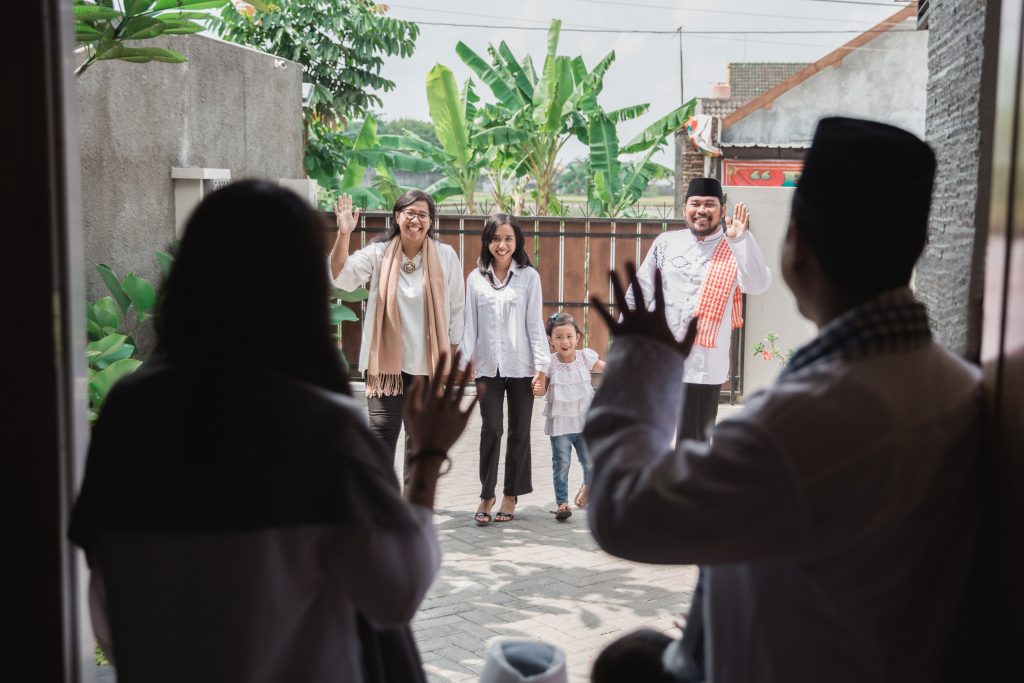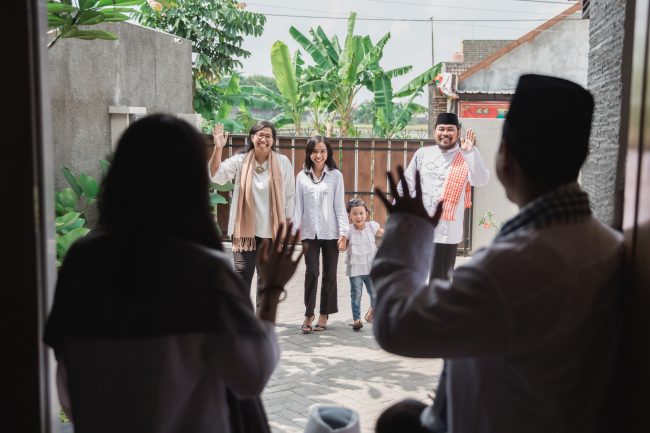
There was a time when the sound of a neighbor knocking on the door was a common, welcome occurrence. Communities were built on a foundation of mutual trust and shared resources. The idea of borrowing a cup of sugar, for instance, was not just a cliche. In reality, it was a normal part of daily life. This was especially true in the 1960s, a time before hyper-individualism and two-day shipping took hold.
Today, we live in a different world. We value self-sufficiency. We often have more things than we need, stored away in garages and closets. Indeed, we have replaced neighborhood borrowing with online ordering. Looking back at the things neighbors shared freely reveals more than just nostalgia. In fact, it shows a fundamental shift in our sense of community and connection.
1. A Cup of Sugar (or Any Pantry Staple)
This is the quintessential example for a reason. Running out of a key ingredient mid-recipe used to mean a quick trip next door. Eggs, flour, milk, or a cup of sugar were commonly borrowed and lent. It was an unspoken agreement that you would return the favor when they were in a pinch. Today, however, we are more likely to make a late-night run to the 24-hour grocery store than to ask a neighbor for help.
2. Lawn and Garden Tools
Not every household on the block needed its own lawnmower, wheelbarrow, and hedge trimmer. These larger, more expensive items were often shared among several neighbors. For example, you might borrow a ladder for a weekend project or a shovel to plant a new tree. This practical sharing saved everyone money and storage space. Now, it is common for every garage to hold its own complete, and often underused, set of tools.
3. Childcare in a Pinch
“Can you watch Timmy for an hour while I run to the doctor?” This was a common and life-saving request among neighbors. In those days, parents relied on each other for informal, short-term childcare. There was a sense of collective responsibility for the neighborhood kids. While this still happens in some close-knit communities, many people now rely on formal, paid babysitters or family members who may live farther away.
4. Newspaper and Magazine Subscriptions
Before the internet, newspapers and magazines were a primary source of information and entertainment. It was common for one family to subscribe to the morning paper and another to the evening edition. Then, they would pass them back and forth over the fence. The same went for popular magazines. This sharing of media created shared topics of conversation and a collective awareness of current events.
5. Hand-Me-Down Clothes
Children grow fast. In the ‘60s, therefore, it was very common for bags of outgrown children’s clothing to be passed from one family to the next. The clothes would make their way through several neighborhood kids before they were worn out. This was not seen as charity. Instead, it was a practical, sustainable, and budget-friendly system that benefited everyone. Today, fast fashion has made it easier to just buy new.
6. Surplus Garden Vegetables
If your backyard garden produced an overabundance of tomatoes or zucchini, the first people you shared them with were your neighbors. A bag of fresh vegetables left on the porch was a common and welcome sight in the summer. It was a way to share the literal fruits of your labor and reduce waste. Furthermore, it also connected people to the source of their food and the changing of the seasons.
7. Specialty Kitchen Gadgets
Not everyone owned a fancy punch bowl, a large coffee urn for parties, or a turkey roaster used only once a year. These specialty items were often community property. You knew which neighbor to ask when you were hosting a big event. This informal lending library of kitchenware made entertaining more accessible and affordable for everyone. Now, however, we are more likely to have a cabinet full of single-use gadgets.
8. Help with a Car Jump or Repair
A dead car battery was not a call to AAA. Instead, it was a call to the neighbor who knew something about cars. Popping the hood and helping a neighbor get their car started was a common sight. People shared their mechanical knowledge and tools freely. There was a sense that you helped each other out of a jam. In contrast, many people today would not feel comfortable asking a neighbor for that kind of help.
9. Local Gossip and News
The neighborhood grapevine was a powerful information network. News traveled over the fence, on the front porch, or during a shared cup of coffee. You learned who was sick, who had a new baby, and who was moving away. This was not always malicious gossip. In reality, it was how a community stayed connected and aware of each other’s lives. It was how people knew when to offer a meal or a helping hand.
10. A Listening Ear
Perhaps the most important thing neighbors shared was their time and attention. A conversation on the front steps could be a source of advice, comfort, or simply a friendly chat to break up the day. People took the time to listen to each other’s troubles and celebrate their joys. This everyday social connection was a powerful antidote to loneliness and isolation. Sadly, it is something many people are missing today.
Rebuilding Community, One Shared Item at a Time
Our modern lives offer incredible convenience and self-sufficiency. In the process, however, we may have lost something important. The list of things neighbors shared shows us a model of a more interconnected, supportive way of living. We may not go back to borrowing cups of sugar. But perhaps we can start by learning our neighbors’ names, offering to lend a tool, or simply sharing a friendly conversation over the fence. Ultimately, rebuilding that sense of community starts with small, generous acts.
What do you wish neighbors still shared today? Let us know in the comments.
What to Read Next…
- Why New Neighbors Aren’t Introducing Themselves Anymore
- What Your Neighborhood Knows About Your Financial Struggles—Thanks to Public Records
- 7 Reasons Your Quiet Neighborhood Is Getting Less Safe
- 9 “Friendly” Things Your Neighbor Does That Are Actually Kind of Intrusive
- 7 Hidden Dangers in Your Neighborhood That Could Be Putting You at Risk

Latrice is a dedicated professional with a rich background in social work, complemented by an Associate Degree in the field. Her journey has been uniquely shaped by the rewarding experience of being a stay-at-home mom to her two children, aged 13 and 5. This role has not only been a testament to her commitment to family but has also provided her with invaluable life lessons and insights.
As a mother, Latrice has embraced the opportunity to educate her children on essential life skills, with a special focus on financial literacy, the nuances of life, and the importance of inner peace.







